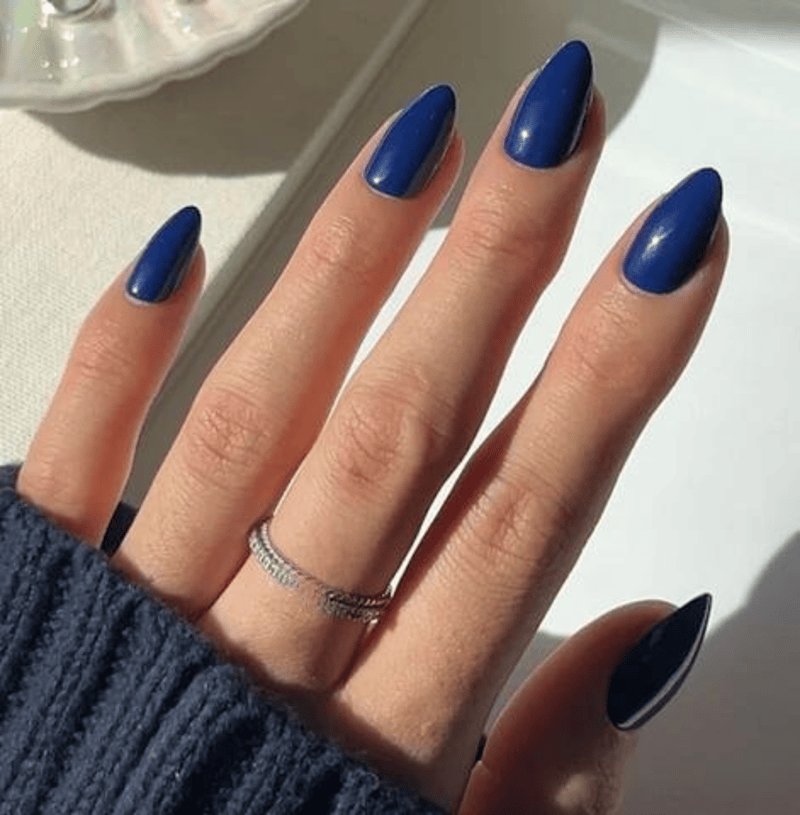




What is the Difference Between Gel and Acrylic Nail Extensions?
Understanding Gel and Acrylic Acrylic Press On Nails
Gel Nail Extensions
Acrylic Acrylic Press On Nails Extensions
Key Differences Between Gel and Acrylic Press On Nails
1. Application Process
Gel Nail Extensions:
- Applied in thin layers
- Each layer is cured under UV or LED light
- Typically requires 3-4 layers
- Generally, a quicker process than acrylic press on nails
Acrylic Press on Nails Extensions:
- Applied as a single, thicker layer
- Air dries naturally
- Requires more skill to shape and form
- Can take longer to apply than gel
2. Appearance
Gel Nail Extensions:
- Naturally glossy finish
- Thinner and more flexible
- Often look more natural
- Available in a wide range of colors
Acrylic Nail Extensions:
- Thicker and more durable look
- Requires buffing and polishing for shine
- Can appear less natural, especially if thick
- Typically applied clear and then painted
3. Durability and Longevity
Gel Nail Extensions:
- Last 2-3 weeks on average
- Less prone to lifting
- More flexible, less likely to break
- Easier to remove with less damage to natural nails
Acrylic Nail Extensions:
4. Odor and Chemicals
Gel Nail Extensions:
- Little to no odor
- Generally considered to have fewer harsh chemicals
Acrylic Nail Extensions:
- Strong, distinct odor during application
- Contains more harsh chemicals
5. Cost
Gel Nail Extensions:
- Generally more expensive
- May require special LED or UV lamps
Acrylic Nail Extensions:
- Usually less expensive
- No special equipment required for curing
Comparison Table: Gel vs. Acrylic Press on Nails
| Feature | Gel Nail Extensions | Acrylic Nail Extensions |
| Application | Thin layers, UV/LED cured | Single thick layer, air |
| Appearance | Glossy, natural-looking | Thick, durable-looking |
| Durability | 2-3 weeks | 3-4 weeks or more |
| Flexibility | More flexible | More rigid |
| Odor | Little to none | Strong during application |
| Cost | Higher | Lower |
| Removal | Easier, less damaging | Can be more damaging |
| Natural nail | Generally gentler | Potentially more damaging |
Steps for Applying Gel Nail Extensions
- Prepare the natural nails by cleaning, shaping, and buffing.
- Apply a nail dehydrator and primer to ensure better adhesion.
- If using tips, apply and trim them to desired length.
- Apply a thin layer of base gel and cure under UV/LED light.
- Apply the builder gel in thin layers, curing between each layer.
- Shape and file the cured gel to desired shape and length.
- Apply color gel or polish if desired.
- Finish with a top coat and cure one final time.
Steps for Applying Acrylic Nail Extensions
- Prepare the natural nails by cleaning, shaping, and buffing.
- Apply nail tips if desired and trim to length.
- Apply nail primer to ensure better adhesion.
- Mix the acrylic liquid and powder to create the right consistency.
- Apply the acrylic mixture to the nail, shaping as you go.
- Allow the acrylic to air dry completely.
- File and shape the acrylic to the desired shape and length.
- Apply polish or nail art as desired.
- Finish with a top coat for added shine and protection.
Benefits of Gel Nail Extensions
- Natural-looking finish
- Flexible and less prone to breaking
- No strong odors during application
- Glossy finish without the need for excessive buffing
- Generally gentler on natural nails
- Quick application and curing process
Benefits of Acrylic Nail Extensions
- Extremely durable and long-lasting
- Can dramatically change nail length and shape
- Ideal for nail biters or those with very weak nails
- More affordable than gel extensions
- Easier to repair if damaged
- Wide range of customization options
Frequently Asked Questions (FAQs)
Q1: Are gel or acrylic extensions better for weak or damaged nails?
A: Gel extensions are generally considered better for weak or damaged nails as they are more flexible and less likely to cause further damage. However, proper application and removal are crucial for both types.
Q2: Can I switch from acrylic to gel extensions or vice versa?
A: Yes, you can switch between the two. However, it's best to allow your natural nails some time to recover between different types of extensions.
Q3: How often do I need to get fills for gel and acrylic extensions?
A: Gel extensions typically need fills every 2-3 weeks, while acrylics can often go 3-4 weeks between fills.
Q4: Do gel or acrylic extensions damage natural nails?
A: Both can potentially damage natural nails, especially if not applied or removed properly. Gel extensions are generally considered less damaging, but the health of your natural nails depends largely on the skill of the technician and how well you care for your nails.
Q5: Can I remove gel or acrylic extensions at home?
A: While it's possible to remove both types at home, it's not recommended. Improper removal can severely damage your natural nails. It's best to have extensions removed by a professional.
Q6: Are gel extensions more expensive than acrylics?
A: Generally, yes. Gel extensions tend to be more expensive due to the materials used and the specialized equipment required for curing.
Conclusion
Both gel and acrylic press on nails offer unique benefits and can provide beautiful, long-lasting manicures. The choice between the two often comes down to personal preference, budget, and the condition of your natural nails. Gel extensions are ideal for those seeking a more natural look and feel, with less odor during application. They're also a good choice for those with sensitive nails or those new to extensions. Acrylic press on nails, on the other hand, offer unparalleled durability and are excellent fordramatically changing nail length and shape. They're also more budget-friendly and easier to repair.
Regardless of which type you choose, it's crucial to have your extensions applied and removed by a skilled professional to minimize damage to your natural nails. Regular maintenance and proper care between salon visits will help ensure the longevity of your extensions and the health of your natural nails.
Remember, the best choice is the one that fits your lifestyle, budget, and nail health needs. Don't be afraid to try both types to see which you prefer, and always prioritize the health of your natural nails above all else.

.png)







